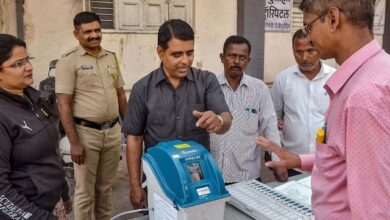“British feared a repeat of the 1857 mutiny” on the anniversary of Jallianwala
To mark 105 years after the tragedy, the Jallianwala Bagh Chair at Guru Nanak Dev University hosted a nationwide symposium titled “Situating the Jallianwala Bagh Massacre in the Indian National Movement.” The keynote speaker was Prof. Harish K. Puri, a former chair of the university’s Ambedkar Chair.

In his speech, he outlined his primary point about how, after the event, the leaders of the Congress Inquiry Committee—Mahatma Gandhi in particular—overcame their anxiety and came out to testify against the British administration.
Two books that were based on studies on the Jallianwala Bagh by researchers were also launched at the occasion. Prof. Amandeep Bal and Dr. Dilbag Singh’s debut book, “Re-visiting Martyrs of the Jallianwala Bagh Massacre,” tackles the question of how many people were murdered and injured in the tragedy. “It is impossible to solve the mystery about the exact number of people killed and wounded after 100 years,” Dr. Amandeep Bal remarked in response to the question of recording the precise number of people slain or injured.
Martial rule was in effect until June 1919, and it wasn’t until August 1919 that the British government began gathering data. A large portion of the data was lost in the aftermath and during the British government’s cover-up.
Over the course of our two-year investigation, we were able to identify 101 injured and 55 more people on the slain list using the 1922 Compensation Files and two surveys conducted at the time. Every list that is currently accessible has been recorded in the book’s appendices, which provide a detailed description of our investigation. Additionally, 34 children who were among those slain have been recognized; however, there may have been more, since many people’s ages have not been disclosed,” she said.
The second book, “The Jallianwala Bagh Journals,” was written in reaction to the slaughter as a test of public history by Sarmistha Dutta Gupta. Drawing on the recollections of Amritsar residents from their families and communities, Dutta Gupta has endeavored to establish a correlation between the notion of constructing structural monuments and the recollections of a generation.
Sarmistha remarked, critically, that Rabindranath Tagore’s prolonged and intense involvement with the Jallianwala Bagh incident—in which he renounced his knighthood in protest of his refusal to support Nehru’s proposal to erect a memorial there—made a crucial contribution to her investigation into people’s narratives and their sentimental ties to the massacre site. She has made extensive use of her own observations during her 2016 visit to the Jallianwala Bagh Memorial Site.
In his farewell speech, Bhagat Singh’s nephew Prof Jagmohan Singh discussed why the British continued to allude to the rebirth of 1857 in relation to the circumstances that preceded the tragedy of Jallianwala Bagh. “What scared them was the fear of Hindu-Muslim unity, which was evident during the Ram Naumi celebration,” he said.
Prof. Harish Sharma discussed Manto and his literary work on Jallianwala Bagh during the technical sessions, while Prof. Sukhdev Singh Sohal led a discussion on the Ghadrite interpretation of the atrocity.







